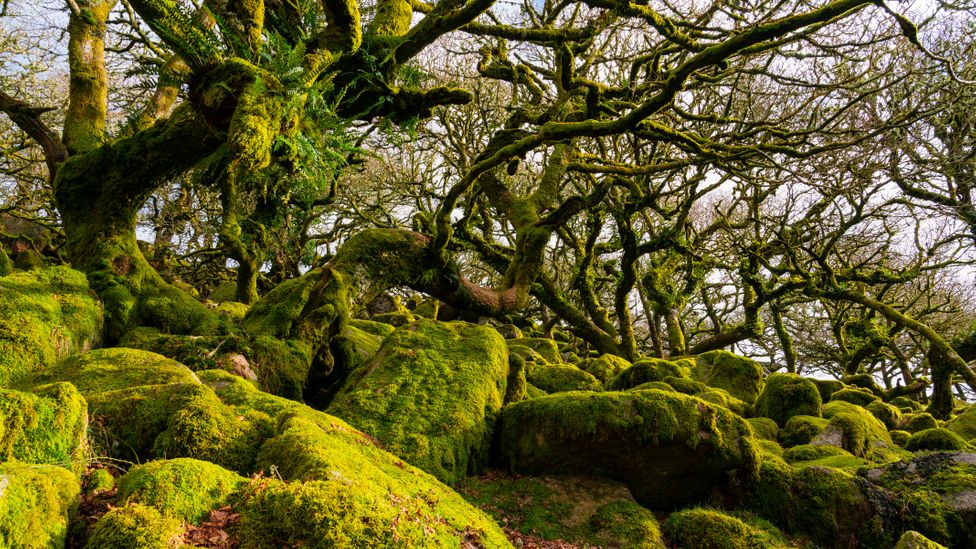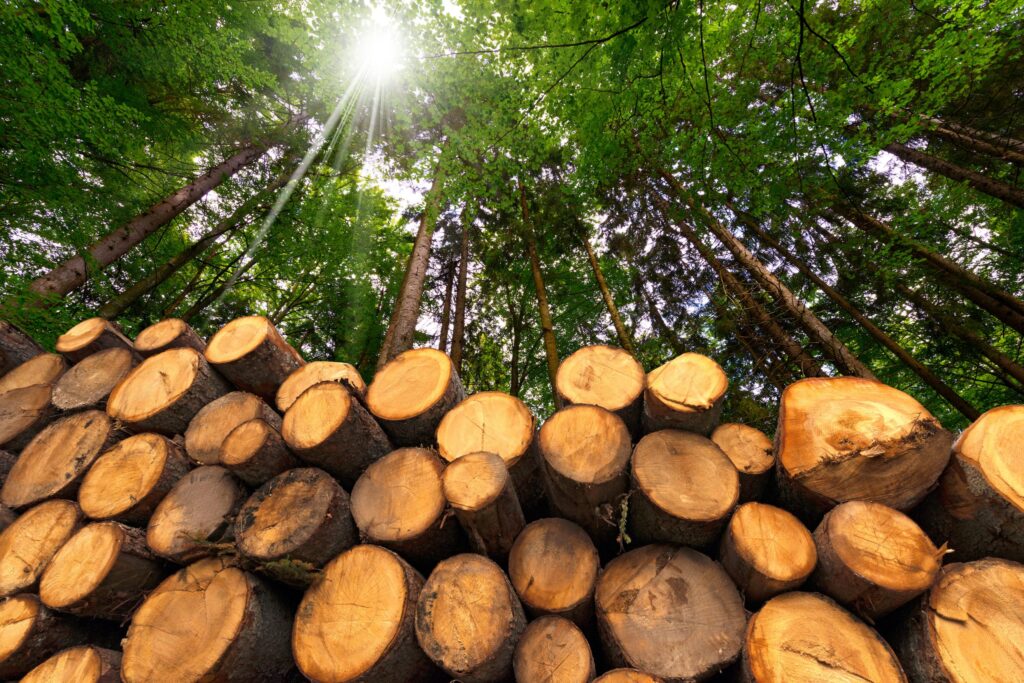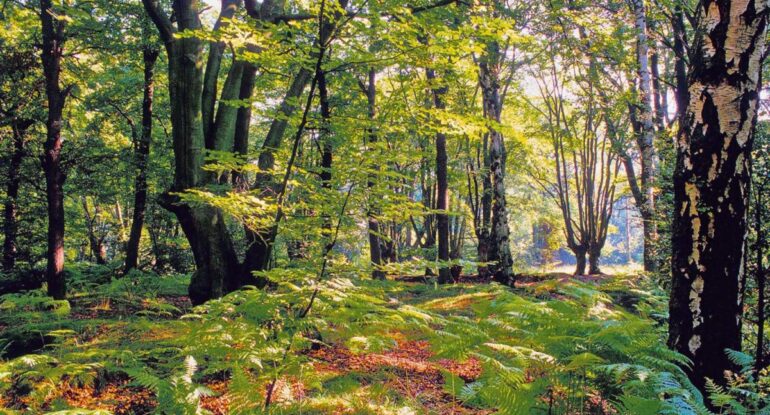What is Forest?
Forests in England- A forest is a complicated ecological system and also dominate the life form. It is the world’s most efficient ecosystem, featuring the highest rate of photosynthesis that affects the animal and plant systems with a myriad of intricate organic interactions.
Forests develop under a variety of circumstances, and the type of soil, plants, and animal life is influenced in accordance with the extremes of environmental factors. Woodlands and forests make up less than one-eighth of total area of land across the UK. They provide habitat for many creatures and aid in maintaining an air balance we breathe. Lets dig into the more detail of forests in England.
Types OF Forests in England
Forests can be found wherever temperatures exceed 10 degrees Celsius. During the hottest months and the annual amount of precipitation exceeds 200 millimetres (8 inches). They may grow under a variety circumstances within these climatic boundaries and the type of soil, plant and animal life varies in accordance with the extremes of environmental influence.
There are three primary types of forests in England, classified by boreal forests as well as temperate and tropical forests.
1. Boreal Forest in the UK
Boreal forests in England has harsh cold climate is difficult for living things, resulting in lower diversity of species compared to tropical and temperate forests. The species of animals and plants that live in boreal forests are built to deal with the shorter growing seasons and frigid temperatures. Boreal forests typically have low acidic, and fertile soils.

2. Temperate Forest in England
Temperate forests are found in mid-latitudes. This gives the characteristic four seasons. Temperate forests in England are home to species that have been adapted to seasonal change. These forests house have numerous species that are endangered. Forests in temperate zones receive an average of between 30 and 60 inches of rainfall per season.
Soils are generally fertile and contain a presence of a thick cover of organic matter from which plants draw nutrients for growth.

3. Tropical Forests
Tropical forests in England are relatively stable conditions, which permit life to flourish. They are the warmest as well as most rainy forests on Earth with temperatures that range between 68 F and 77 degrees F and the possibility of 79- 394 inches of rain per year.
The variety in tropical forest species makes them efficient in the process of converting nutrients. Human activities like clearing land for agriculture, and poaching pose an immediate threat for the sustainability of the tropical forest.

The Difference between Forest and Woodland
The ‘forest’ have those areas that were large enough to accommodate species such as wolves or deer to hunt game, and included other habitats , such as open grassland, heaths and agricultural land.
The term “woodland” can also be thought of as land that is covered in trees and plants However, in the UK the woodlands may not be as extensive as forests.
Forests in England Importance
Forest cover around one-third of all land on Earth and breathe life into our world. And also important for people’s lives, homes and livelihoods and have a crucial role to play in tackling the biodiversity and climate crises. Forests in UK provide us oxygen, shelter, jobs, water, nourishment and fuel. They also play an important role in the global water cycle, moving water across the earth by releasing water vapor and capturing rainfall. And also filter out pollution and chemicals, improving the quality of water available for human use.
Deforestation has serious consequences on the health of people and directly dependent on forests. As well as those living in cities and towns increases the risk of diseases crossing over from animals to humans. Forests are the largest storehouses of carbon after the oceans .They absorb greenhouse gas from the air so when we cut down or damage our forests. We release huge amounts of carbon emissions that contribute to the climate crisis.
Forest Benefit to Human Health
Here are five main benefits that forests can positively impact human health.
1. Forests produce oxygen and absorb carbon dioxide. Carbon dioxide is a greenhouse gas that gets trapped in our atmosphere and compounds the warming of our planet, and forests can help combat that process.
2. Forests purify and provide clean water for our communities.
3. Forests provide oxygen for our lungs.
4. Taking a walk through the forest can benefit physical human health.
5. Forests can actually reduce human stress levels, help us recover from attentional fatigue and generally improve overall mood.
The Largest Forest in England
The Wyre Forest
Wyre Forest is the largest forest in England and has been extended by over 800 acres (60 per cent) to now cover 14,55 hectares. The forest that runs along bordering Worcestershire border and the Shropshire border, is administered through Natural England and Forestry England and also includes Worcestershire Wildlife Trust territory.
Wyre Forest is a mosaic of ravines, woodlands, scrub and grasslands and also an array of amazing and unique wildlife Wyre Forest is a rare instance of a diverse and ecologically healthy woodland located near a huge population centre, which includes Birmingham within 20 miles of the area. The visitor is visited by about 350,000 per year.
Biggest Forests in England
1. The Kielder Water and Forest Park
The largest forest in England that covers 60,000 acres of land, can be found in Kielder Forest. It is situated in Northumberland and the surrounding Kielder village as well as Kielder reservoir for water. The trees were first established around 1920. Today, Kielder is a popular forest that is famous for its artwork as well as its walking trails and wildlife.
2. The New Forest
The New Forest is England’s second largest forest. It is also packed with fun for all members of the family. It covers 219 square miles and is only 90 minutes train ride to London. The New Forest is home to an amazing variety of wildlife. Within the wet heaths woodlands and bogs you can find typical British reptiles and birds like the wood warbler and the grass snake.
3. The Thetford Forest Park
Thetford Forest Park is also one of the largest forest in England. From play areas for children to tranquil walks The forest is full of activities to enjoy. Take a break and enjoy a picnic at Lynford Stag following walking for a while or just enjoy the wildlife in the Lynford Arboretum. Here you can find a variety of birds as well as beautiful flowers.
4. The Forest of Dean
The Forest of Dean was the first forests to be declared as a National Forest Park in 1983. It is currently one of the largest forest areas in England. The Forest is situated in Gloucestershire and bordering with the River Wye. The Forest of Dean spans 26,000 acres and also a working forest, which produces sustainable timber.
5. The Epping Forest
Epping Forest also known as the “Cockney Paradise due to its location providing the ideal escape away from city bustle. If you love fishing, dog walking, or cycling, you’ll be able to take part in at Epping Forest. The Epping Forest has 25 fishing lakes that are spread across, which are ideal for beginners as well as experienced pros.
6 The Savernake Forest
Savernake Forest is an incredible park that is full of old trees. It is also the home of one of the nation’s oldest trees, the huge Bellied Oak. There are a number of beautiful walks in Savernake Forest. Postern Hill to Amity Oak is a view of the city of Marlborough and leads to a small Forestry Commission Camp Site.
7. The Swinley Forest
You may be seeking a tranquil stroll, mountain biking adventure or a family day out there’s something to suit all ages within Swinley Forest. It covers 2600 acres across Bracknell to Crowthorne. There’s plenty to do in Swinley Forest. Bring your children to the play zone, which has an infant, junior and inclusive play space so everyone is able to play.
8. The Ashdown Forest
Ashdown Forest is today one of the biggest forest in England. It is also a well-known tourist attraction. It is located within East Susses, the forest covers 2,500 hectares. Ashdown Forest inspired the fairy-tale forests we’ve become accustomed to.
9. The Delamere Forest Park
Delamere Forest provides 1,098 acres of tranquil woods among the structures and towns of Cheshire. This forest is the perfect spot for those who love to try new things or looking for tranquillity and peace. There are hiking and walking trails that are suitable for everyone within Delamere Forest. The paths made of sandstone are simple to walk on and the trees offer shade during a hot summer day.
10. The Wyre Forest Nature Reserve
Wyre Forest is the largest forest in England. It is located just to the west of Birmingham. This provides a respite away from the hustle and noise of your hectic life. There are many walks to take in that can be found at Wyre Forest Nature Reserve. The people are visited about 350,000 per year. This is great forest for family and children.
11. The Grizedale Forest
Grizedale Forest is the largest within the Lake District. It is one of the stunning regions of the Lake District, and one of England’s largest forest . The Grizedale Forest can be explored on foot, bicycle or even a horse. The people can enjoy some off-road adventure with a guide to safari using the Segway or grab your mountain bike and race through the stones.
12. Sherwood Forest
Sherwood Forest needs no introduction! It is the home of legendary tales of Robin Hood, Sherwood Forest is one of the largest and most beautiful forests in England. Sherwood Forest is now home to a variety of wildlife and flora. wildlife. Explore the old oak trees to spot the numerous species of birds which live in the forest.
13. The Fingle Woods Forest
Fingle Woods may be the tiniest of forests that we have listed, but it’s certainly not one to be left out of forest list. It is located to the north in Dartmoor National Park, Devon. The Fingle Woods has stunning view, peaceful woodland, and lots of wildlife. From bats to birds and butterflies, there’s plenty of wildlife to see within the woodlands. This is the great family spot for picnic.
Best forest in England Conclusion
Forests cover nearly a third of all land on Earth and support countless species, including our own. Humans now clear millions of acres from natural forests every year, especially in the tropics, letting deforestation threaten some of Earth’s most valuable ecosystems.
Forests pump out oxygen and absorb the carbon dioxide. A single mature leafy tree is estimated to produce a day’s supply of oxygen for anywhere from two to 10 people. They also has lots of benefits like bats and songbirds that eat insects or owls and foxes that eat rats. But groups of trees can also serve as a windbreak, providing a buffer for wind-sensitive crops.
Best forest in England FAQs
Q1. What are forests?
A forest is a complicated ecological system and also dominate the life form.
Q2. How do forest trees benefit mental health?
The Forest Trees is lower our blood pressure, reduce stress levels, and make us feel calm ,happy and confident.
Q3. What is the biggest forest in South East England?
The Friston Forest in Sussex is the biggest forest in south East England.
Q4. What is the Largest forest in England?
The Wyre Forest is the Largest forest in England.
Q5. What is the 2nd largest forest in England?
Galloway Forest in Scotland is the UK’s largest forest at 297 square miles.
Q6. What is the oldest forest in England?
The New Forest is the oldest forest in England.











